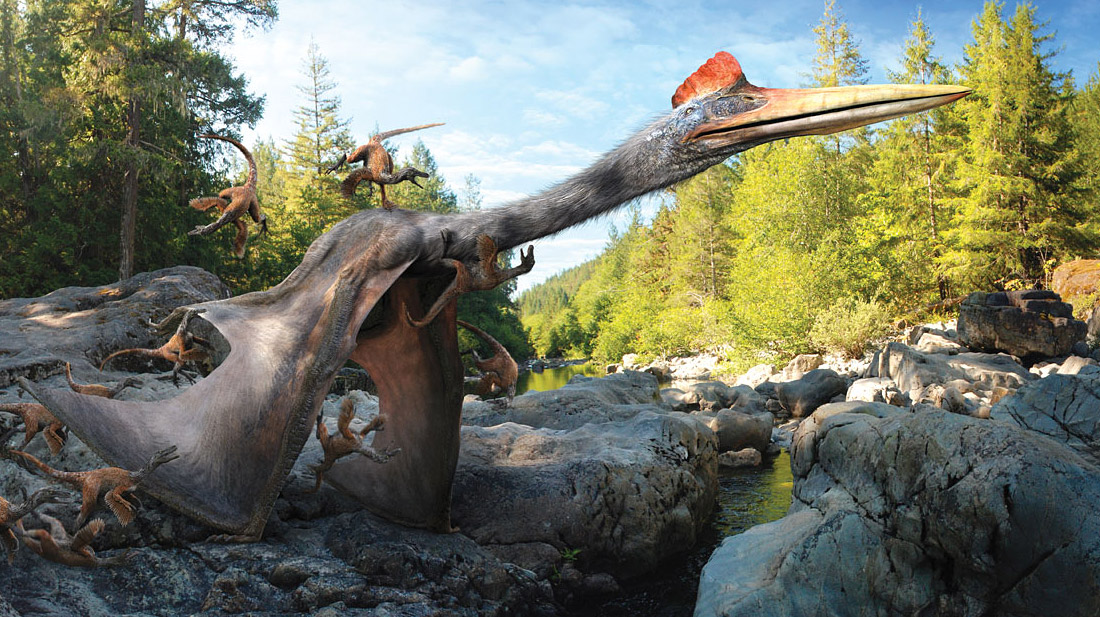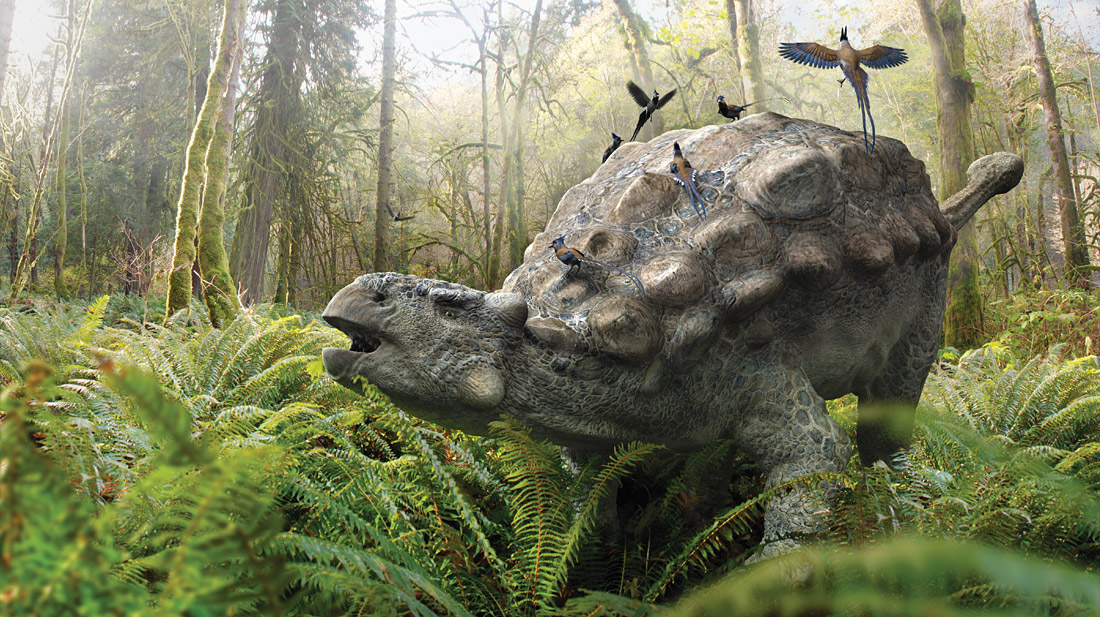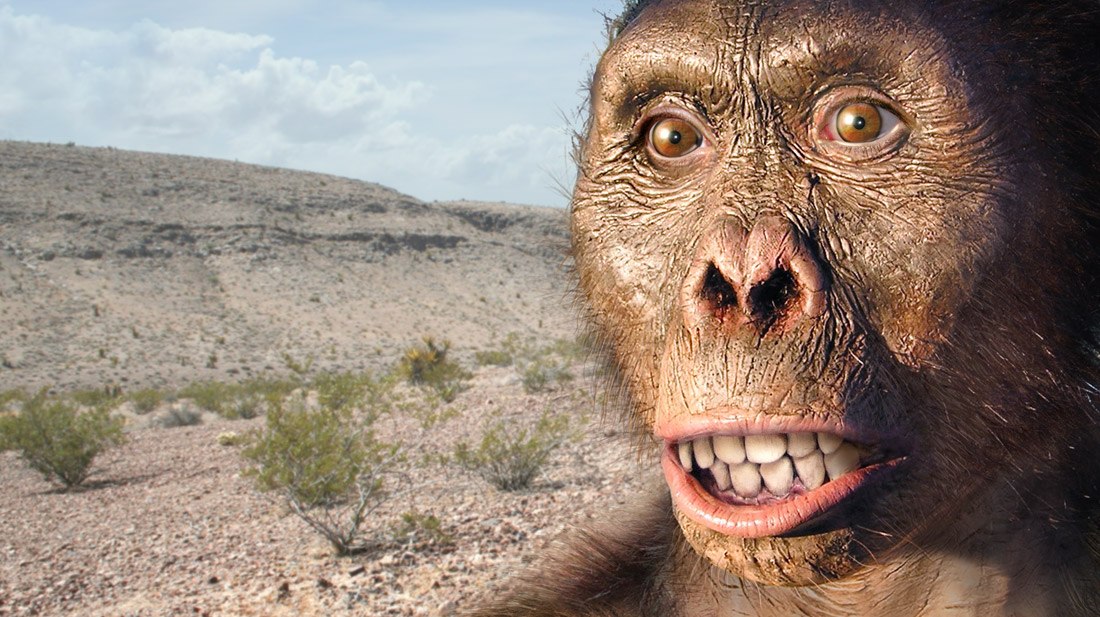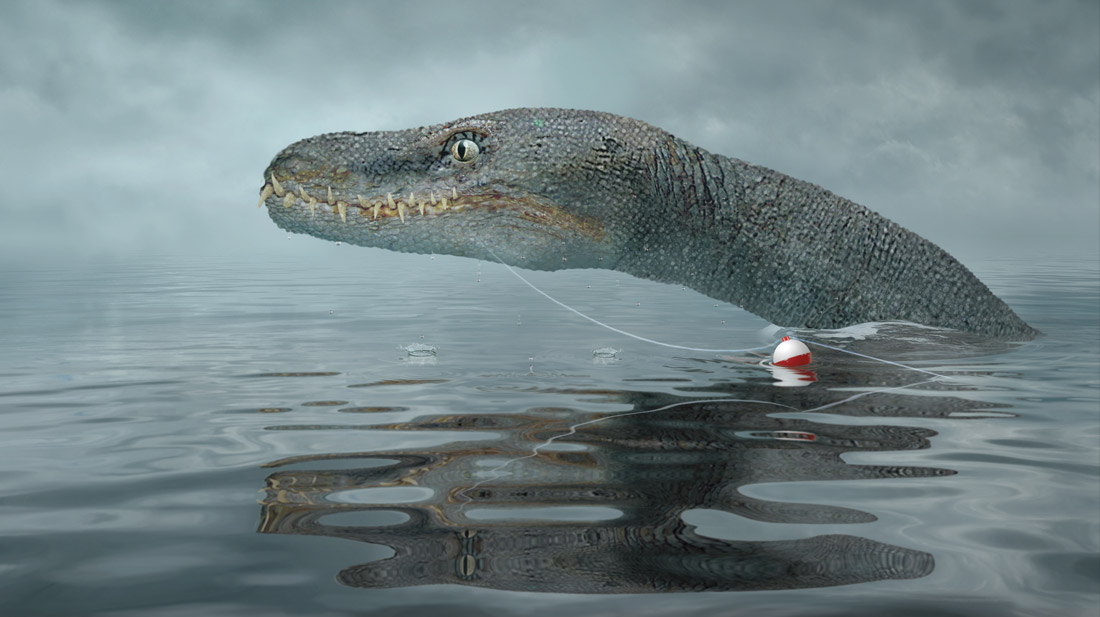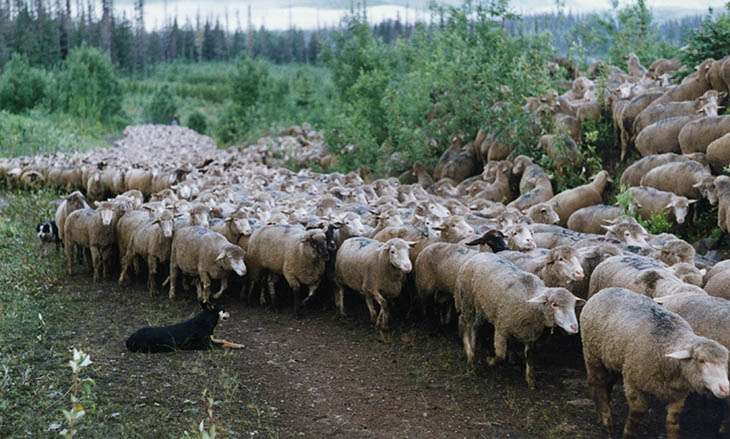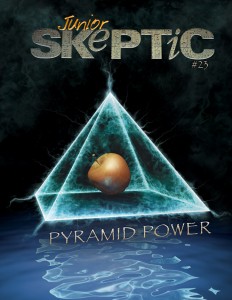The pterosaur Quetzalcoatlus—a majestic flying reptile—encounters a pack of tiny but vicious dinosaurs.
View book listing on Amazon.com
Houdini, Bigfoot, and the Jackson Pollock Effect (2012)
This article was originally published at the defunct Skepticblog.org on Nov 13, 2012. An archived version is available here.
Recently Skeptical Inquirer writer Benjamin Radford posted a question to the Facebook Group thread for Skeptic magazine’s cryptozoology-themed podcast MonsterTalk on the topic of the infamous Patterson-Gimlin film, purported to show a sasquatch striding across a sandbar in the woods. What are we to make, Radford wondered, of claims that the film cannot be duplicated because it would be too expensive, too difficult technically—or perhaps even impossible to recreate due to the anatomical limits of human actors? I responded to say that all such arguments are in my opinion baloney, but that this does not necessarily imply that attempts to recreate the film to the satisfaction of fair viewers actually ever will succeed. Even if the original was a crude hoax accomplished by cheap, simple means (as I suspect) it may still be the case that it can never be matched. Read more
